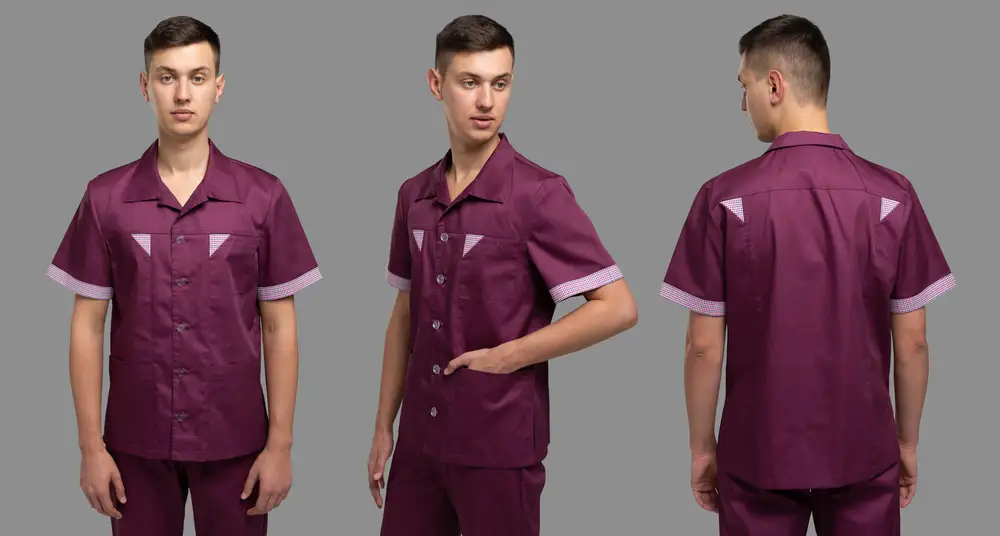Introduction
Establishing a strong brand identity is crucial for success in today’s highly competitive business environment. Corporate uniforms play a significant role in this endeavor, serving not just as attire for employees but as a powerful tool for branding and team cohesion. This article delves into the importance of corporate uniforms in shaping a company’s image, fostering a sense of unity among staff, and acting as a silent ambassador to the brand. We explore the evolution of corporate attire, from traditional suits to modern, branded apparel, highlighting how they have become an integral part of corporate identity.
Benefits of Corporate Uniforms
Fostering Team Spirit
Corporate uniforms are more than just clothes; they symbolize unity and belonging. They help create a sense of equality among employees, regardless of their positions or departments, fostering a team spirit essential for a productive work environment. When employees wear the company logo, it instills a sense of pride and responsibility, encouraging them to act as brand ambassadors in and out of the workplace.
Enhancing Professional Image
A well-designed corporate uniform speaks volumes about a company’s professionalism and attention to detail. It presents a unified image to customers and clients, signaling a well-organized and trustworthy business. This consistent visual branding helps businesses stand out in a crowded market, making a lasting impression on both current and potential clients.
Brand Promotion
Corporate uniforms are a walking advertisement. Every employee wearing the company’s logo and colors becomes a mobile billboard, promoting the brand without saying a word. This passive form of marketing is incredibly effective, as it reaches a wide audience in various settings, from business meetings to public commutes, amplifying brand visibility and recognition.

Key Elements of Corporate Uniform Design
Color Scheme and Branding
Choosing the right color scheme and branding for corporate uniforms is crucial. Colors should reflect the company’s brand identity and be easily recognizable. The logo and any other branding elements need to be strategically placed for maximum visibility without overwhelming the garment’s design.
Comfort and Practicality
For uniforms to be effective, they must be comfortable and practical for the tasks at hand. Employees are more likely to wear their uniforms with pride if they fit well and are made from high-quality, breathable materials that can withstand the rigors of daily wear.
Customization Options
Offering customization options allows employees to tailor their uniforms to fit their styles while maintaining a cohesive look. This flexibility can increase employee satisfaction and compliance with uniform policies, ensuring that the staff looks professional and unified.

Choosing the Right Corporate Uniform
Industry-Specific Considerations
Selecting the appropriate corporate uniform requires an understanding of the unique demands and norms of your industry. For instance, the financial sector often opts for more formal attire to convey professionalism and trustworthiness, whereas tech companies might prefer casual, branded apparel that reflects their innovative and relaxed culture. Each choice sends a distinct message about the company’s values and approach to business.
Quality and Durability
Investing in high-quality materials and construction for corporate uniforms ensures they remain in top condition, reflecting well on the company and providing long-term savings on replacements. Durable fabrics that are easy to clean and maintain while retaining their color and shape are essential for a uniform that looks great day after day.
Sourcing and Suppliers
Choosing the right supplier is as crucial as the uniform design itself. Partners who understand your brand and can offer sustainable, ethically produced options will add value beyond the garments they deliver. Look for suppliers with a proven track record of quality, reliability, and excellent customer service to ensure a smooth process from design to delivery.

Case Studies: Successful Corporate Uniform Implementations
A Tech Company
One notable example comes from a leading tech company that introduced smart, casual uniforms blending comfort with the company’s vibrant brand colors. The introduction of these uniforms led to an increase in employee morale and a more cohesive team appearance at industry events, significantly boosting the company’s visibility and brand recognition.
A Hospitality Business
A luxury hotel chain redesigned its uniforms to reflect better its brand’s values of elegance and exceptional service. The new attire featured high-quality fabrics in a color scheme that matched the hotel’s interior, creating a seamless and upscale customer experience. This change not only enhanced the staff’s professional appearance but also elevated the overall guest perception of the hotel.
Conclusion
Corporate uniforms are a potent tool for branding, team unity, and professional presentation. They go beyond mere clothing, embodying the company’s values and ethos. A well-chosen uniform enhances brand visibility, fosters a sense of belonging among employees, and presents a unified image that resonates with customers and clients alike. By carefully considering the design, quality, and sourcing of corporate uniforms, companies can leverage this asset to stand out in the competitive business landscape. Feel free to inquire if you need further information.




